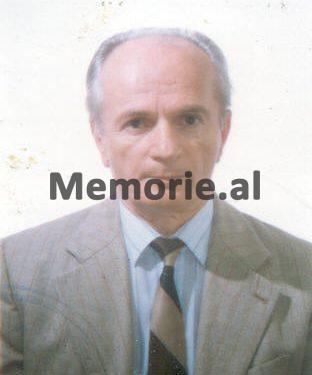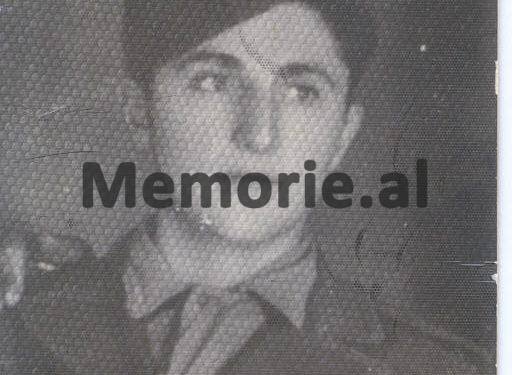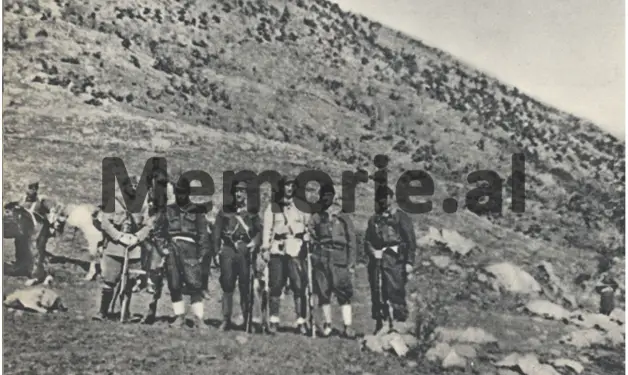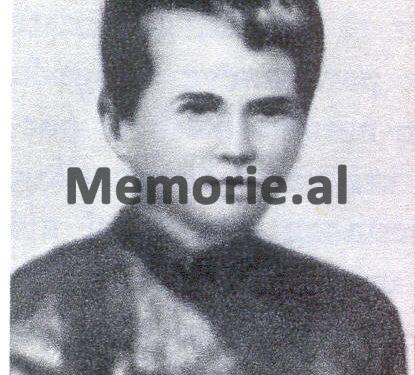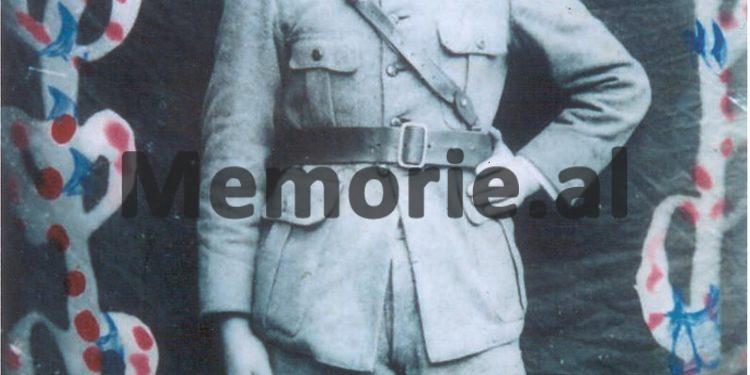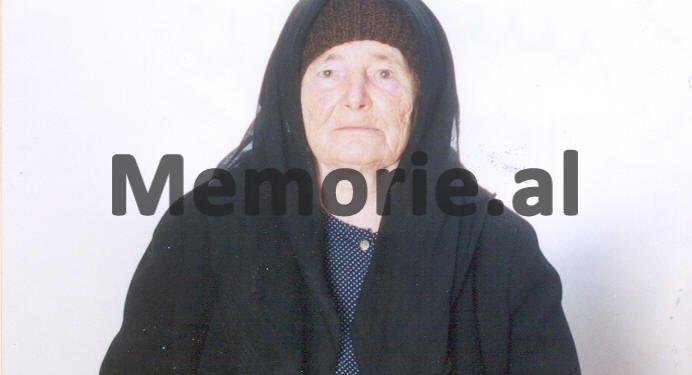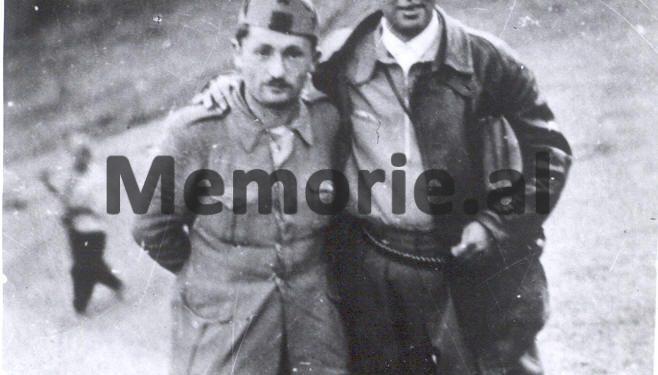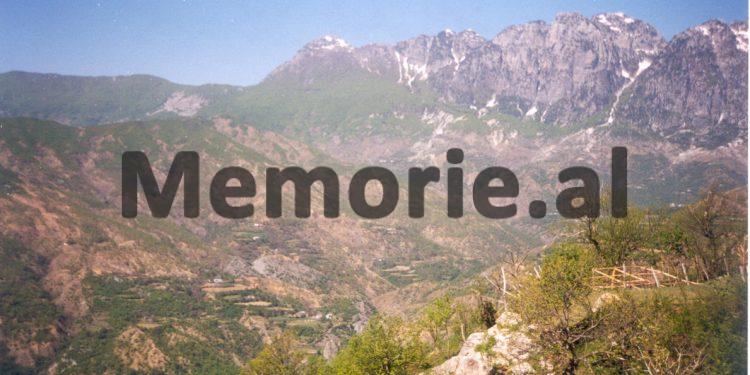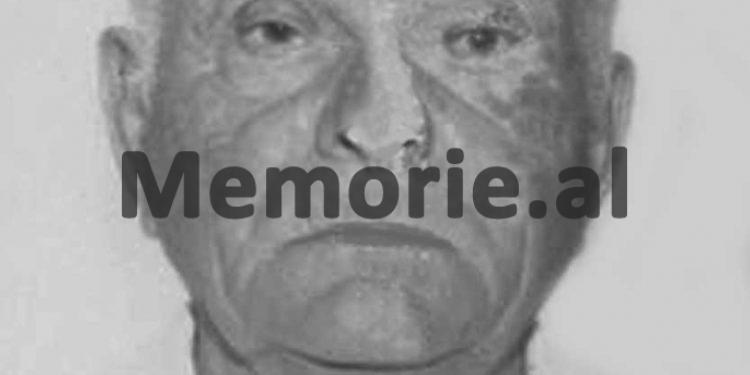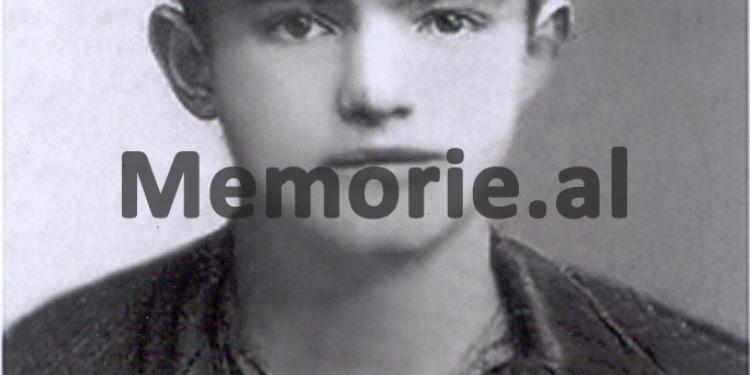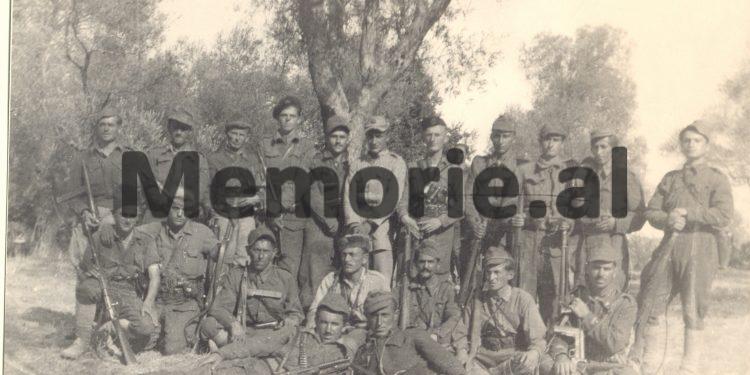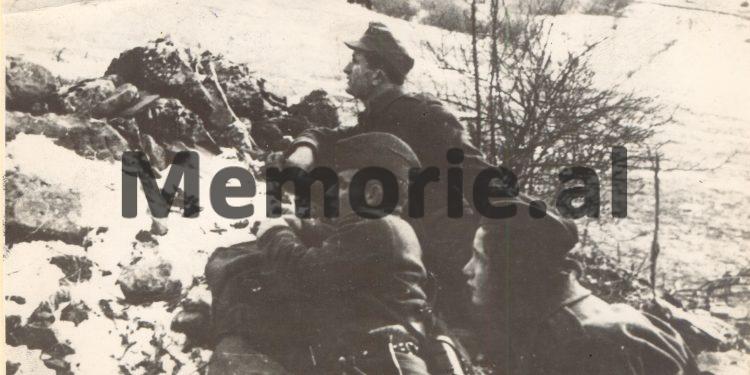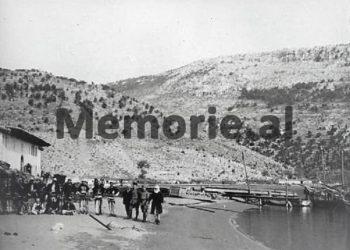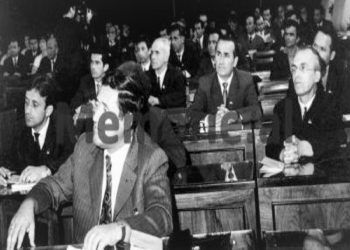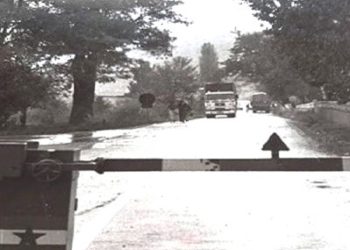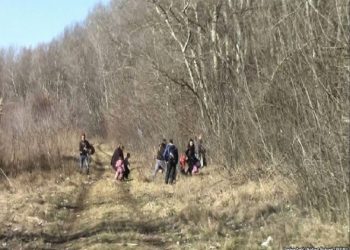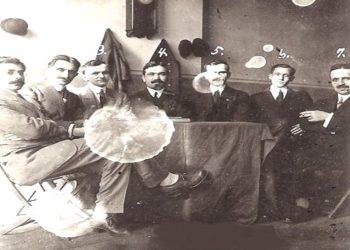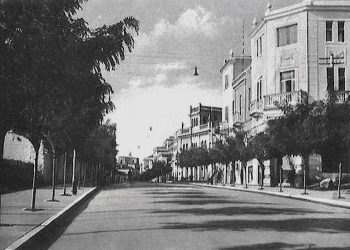Dashnoe Kaloçi
Memorie.al publishes the unknown story that took place on November 28, 1944 in the village of Xhan in the deep province of Dukagjini, where a partisan unit of the VI Assault Brigade commanded by Commander Jaho Gjoliku and Commissar Haki Toska, executed a group mountaineers from the village of Bruçaj, who, traveling at night to their homes after shopping in the city of Shkodra, encountered a partisan ambush of that brigade commanded by the 15-year-old pioneer, Çelo Sinani, (“People’s Hero”) who was killed during an exchange of fire between them.
The rare testimony of Prek Sokol, originally from Dukagjini and living in the village of Rranxa in Bushati, which tells the whole story of that painful event, where in revenge for the partisan pioneer who was mistakenly killed by those migrant highlanders in the ambush they had set up the unit of the ‘Cleansing Battalion’ by order of the command of that brigade, a young partisan, ‘sister’ of Çelo Sinani, executed ten innocent mountaineers: Tom Martini, Pëllumb Sokoli, Kol Vata, Pal Pëllumbi, Nikoll Mirashi, Mëhill Vocrri, Pal Vata, Shytan Deda, Prenush Zefi and Lazër Vuksani.
Rare testimonies of some of the families of the victims, related to the tragic event, where after the execution, the partisan unit of the VI Assault Brigade, naked stripped the ten killed mountaineers, taking the clothes they needed for their comrades partisans and disfigured the corpses by hitting them with rifle bayonets!
Testimony of Lieutenant Colonel Arif Bizhga, former company commissioner in the VI Assault Brigade and participant in that event, (former senior military with the rank of lieutenant colonel in the Ministry of Defense and Interior) and Reis Sinan, (brother of Çelo Sinan, who holds the high title of “People’s Hero”), a former military graduate in Electronic Engineering in the former Soviet Union.
“As soon as they arrived somewhere in a stream, Çelo Sinan’s ‘sister’ pulled out a revolver and shot Nikol Mirashi two or three times in the head, leaving him dead on the spot. When the group of partisans of the Clearance Battalion of the VI Brigade, Attackers together with the eight tied highlanders arrived in Qafë-Thanë where the brigade headquarters was located, according to the promise they had given to the ‘sister’ of Çelo Sinani, eight the men lined her up in front of her. At that moment, she pulled out a pistol from her belt and started firing at the mountaineers, hitting eight of them with two bullets in the head. When she was about to shoot at the last one, 17-year-old Mëhill Vocrri, some partisans begged her to forgive him, but she continued to shoot at him, saying: ‘Let him be the same age as my Çelo’. After leaving the nine mountaineers dead in the ninth place (along with Nikoll Mirashi who killed him along the way), Çelo Sinan’s ‘sister’ ordered the other partisans to undress them quickly and take their clothes. the bodies of those killed, as they were needed by the partisans of the brigade, who were marching towards Montenegro”. This is how Prek Sokoli recalled that distant event that took place on November 28, 1944, the last day of the War for the partisan forces of Enver Hoxha who were marching in the province of Dukagjini, in the direction of Montenegro, where a partisan young woman, executed seven innocent men, in revenge for the murder of Çelo Sinan, the partisan pioneer (“People’s Hero”) whom she considered a brother. How did that event happen, who were the ten highlanders who were executed by the hand of the sister of the martyr Çelo Sinani and why did she commit that macabre murder that has not yet been forgotten in that distant region of Northern Albania?!
Regarding that event, in addition to the testimony of Prek Sokoli and three other families where their members were in the tenth group of highlanders shot, in this article we are bringing the testimony of Arif Bizha, former company commissioner in the VI Brigade -Attacker and participant in that event, who until 1981, served as a senior soldier with the rank of lieutenant colonel in the Ministry of Defense and the Ministry of Internal Affairs, reaching the position of Deputy Chief of Staff of that ministry . Likewise, in addition to the interview with Mr. Arif Bizhga, we are also giving that of Reis Sinan (Celo Sinan’s brother, “People’s Hero”), a former military graduate in Electronic Engineering in the former Soviet Union.
Followed by the last number
Mr. Arif, did you know the “People’s Hero”, Çelo Sinan?
I have known Celo since he came as a partisan in the VI Assault Brigade, where I was effective from its inception and from the time he was killed, have we been together in that brigade?
Do you remember the event where Çelua was killed?
Although many years have passed since November 28, 1944, when Çelo Sinani was killed, I, and almost all of us former partisans of the VI Brigade, have that event fresh in our memory, because Çeloja, for his very young age, had become the symbol of the Brigade.
Where was your brigade at the time of Chelo’s murder?
At that time, at the end of November 1944, our partisan forces of the VI Brigade, where I was the commissar of the company, were located in Qafën e Kolshit, in the province of Nikaj-Mërtur in Tropoja. There we were concentrated in a valley near the river that flowed there, to protect ourselves from the blows of the opposing enemy forces, who had ambushed us everywhere in the gorges and shot at us incessantly, threatening to destroy us completely.
Why was your brigade located in that deep area and what mission was assigned to it?
At that time our brigade was located in that deep area of the Tropoja highlands, after receiving orders from the Division Command commanded by Colonel Tahir Kadareja, to do cleanups in those deep areas and after those cleanups we had to go to towards the city of Shkodra, where we would take part in the fighting for the liberation of that city, which was still held by German forces.
Who were the commander and commissioner of your brigade at that time?
At that time, the commander was Jaho Gjoliku and Commissar Haki Toska.
You stated above that your partisan forces were under the attack of the opposing enemy forces, which fired at them incessantly. Who were these opposing forces, against whom you had received orders to carry out purges?
The opposing forces to which we had received the order to fight and cleanse them were the German and reactionary forces, led by the bayraktars of those areas. This was the order given to us by the superior command.
During those fights, the Brigade where you were, did you face the German forces and did you fight against them, or did your fights and battles consist only of the Albanian reactionary forces, as you called them?
To be honest to the end with you, in those fights and purges that our brigade did at that time, we have not seen any Germans with eyes. But we have done all the fighting and cleansing only against the Albanian reactionary forces. This is the truth and I cannot lie saying: at that time, we fought against the German forces!
What happened next to your partisan forces there in Qafën e Kolshi, where you said that you were under the attack of the reactionary forces that were shooting at you incessantly?
There our forces found themselves in a very difficult situation from which we were in danger of being completely destroyed, as we were in danger of being taken by the arms, so they surrounded us. The reactionary forces that had occupied the gorges shot at us from above and there we were killed by a partisan named Shyqëri Sinani, who was a cousin of Çelo Sinani. To escape from that difficult situation where the situation was becoming more and more complicated, the Commander of the Division, Colonel Tahir Kadareja, who had been a career soldier, ordered us to go back again, to go out on the outskirts of Tropoja. There, after we had made the selection of forces, (leaving the sick and the girls who would find it difficult to continue the march in that never-before-seen cold), we received orders to continue the march again, in order to force the reactionary forces to get out on their backs, with arms outstretched. After that with the two battalions commanded by Qerim Çakua and Qemal Xhaferri, we traveled for a whole day, cracking with bayonets the snow and ice that was over half a meter and reached the backs of the opposing forces. There we fought and utterly defeated those who immediately withdrew from our lightning strike.
Were there any killed by partisan and “reactionary” forces?
Neither of us nor of them were any killed.
What did you do after defeating the opposing forces?
After their defeat, our brigade continued the march in the column at a bad time, traveling towards Shkodra, where as I said we would fight for its liberation. During that march, the first battalion had left a vanguard squad, in which it was squad-commander, Çelo Sinani. In a place called Qafë-Thanë, the vanguard team commanded by Çeloja, fell into an ambush of reactionary forces where several rifles were exchanged. After that, the news broke that Çelo Sinani had been killed there.
Who shot first in that ambush, the team commanded by Çeloja, or those of the ambush?
I do not know who shot first, because for the very situation that that event happened, at night and in a bad time, that thing is incredibly difficult to determine. But logic says that the first ones must have shot the host, that is, the reactionaries as we called them.
After the assassination of Çelo, what did your commanders tell you?
We were told that Çelo was killed by an ambush of reactionaries, who took action against our brigade, in revenge for the defeat they had suffered from our blow. After that, Çelo’s body was transported to the nearest village, Domje. The next day his funeral ceremony took place and as usual, the brigade took the oath in front of his grave, vowing to avenge him.
Were the partisan forces of those two battalions where you were also in pursuit of those who shot at Çelos, in order to take revenge?
But who were we to follow that night and through that time with rain and snow and very rugged terrain where no human foot was visible?! We did not follow anyone, but our Brigade continued on its way and in Postriba, we were attacked by German and reactionary forces commanded by the Bajrak guard of Vermosh, Prek Cali, which we completely destroyed.
Were there German forces in Postriba and did you fight against them?
We were told there were Germans, but it was night and we saw nothing. After that we received the news that Shkodra was liberated and we did not continue the march there, as we were given another order to continue the march to Montenegro. At that time, Gjin Marku was appointed commander of our Division, while Myzafer Spaho was appointed commissioner.
Do you know about the murder of ten men in Qafë-Thanë, who are said to have been killed in revenge for the murder of Çelo Sinani and their execution was carried out by a partisan, who at the time was said to be Çelo Sinan’s sister?
I know nothing about what you say and I have never heard it.
But no revenge was taken for the murder of Çelo, because you yourself said that you swore on his grave that you would take revenge?
I do not know that our brigade killed ten men in revenge for Chelon, but I do not deny the fact that they may have been killed. I say so, as their killing may have been done by other partisan forces that came after us, which were commanded by Mehmet Shehu. They carried out clean-up operations in the area, where many were killed on both sides.
What if your brigade did not carry out any cleansing operations, executing those you called reactionaries?
At that time there was a war and our brigade carried out cleansing operations killing reactionaries, but we did not make them secret, but open to the eyes of all partisans.
How do you explain the testimonies of the families of those ten victims who say that those ten men were killed on November 28, a day after Çelo’s murder, in revenge for him and were committed by a partisan who was said to be his sister?
Honestly, I do not know anything about this event and I say lest they be killed by other partisan forces. But better for that, one should ask former partisans who have been in a company with Celon, many of whom are still alive and can testify quite well. As for what is said that they were killed by Çelo Sinan’s sister, this does not stand. Because Çelua had no partisan sister in our brigade or any other brigade. But the interpretation made by those highlanders who have testified about you, regarding that event, is explained by the fact, because when a partisan was killed and he had to be avenged, the command said to a partisan: you killed us who have killed your brother. Because we partisans were considered brothers and sisters to each other.
Testimony of Reis Sinani, brother of the “People’s Hero”, Çelo Sinani
Celo Sinan’s brother, Reis Sinan, a former military graduate in Electronic Engineering in the former Soviet Union, testified about the incident: “When I read the article about our brother, Celo Sinan, my family and I were We were extremely indignant, because we did not have any partisan sisters, our two sisters, Nihiri and Gjylsoja, at the time Çeloja was killed, were ten years old and the other seven years old. A letter sent to us in the village on January 20, 1945. The letter sent to us by the command of the VI Brigade stated that Çelo had been killed in the war against the occupiers in the battle for the liberation of Shkodra. What we know as a family from the testimony of Kalo Seferi, the deputy commander of the Çelo battalion, Çelua was killed in an ambush when he was at the forefront of the team he commanded, somewhere in the place called Qafë-Thanë. others, are sitting to rest and they have been given potatoes to eat. The desolate Celua could not eat the potatoes because the order came to continue the march and he was killed unable to eat the potatoes. After that, Çelo’s body was transported to the village of Domje, where his team took refuge with the family of the villager Ram Deda. Haki Toska told me that: Çelo’s body was placed on one side of the mule and a machine gun was placed on the other side. That night was the feast of Eid and the lady of the house, Dushe Deda, told her son’s bride to cover Çelo’s lifeless body with her bridal veil, because as Muslims they were, it was a pity that the body of the slain to be uncovered. The next day, Çelo’s body was buried in a pomegranate in the village of Domje. We took Çelo’s remains in 1945 and brought them to Gjirokastra. Our mother, Zykoja, when she learned that Çelua had been killed without being able to eat the potatoes they had been given, she did not put any potatoes in her mouth while she was alive. For the first time in the place where Çeloja was killed, I went in 1976. There we met Ram Deda’s family and the village welcomed us very well. Since then we have formed a close friendship with the mountain family that had kept our brother’s lifeless body and we have come and gone to each other in cases of weddings or other joys, helping them even for any problems or cases of illness that they had in Tirana. As for the murder of ten highlanders in revenge for the murder of Çelo, we do not know and now we are hearing for the first time. Memorie.al




